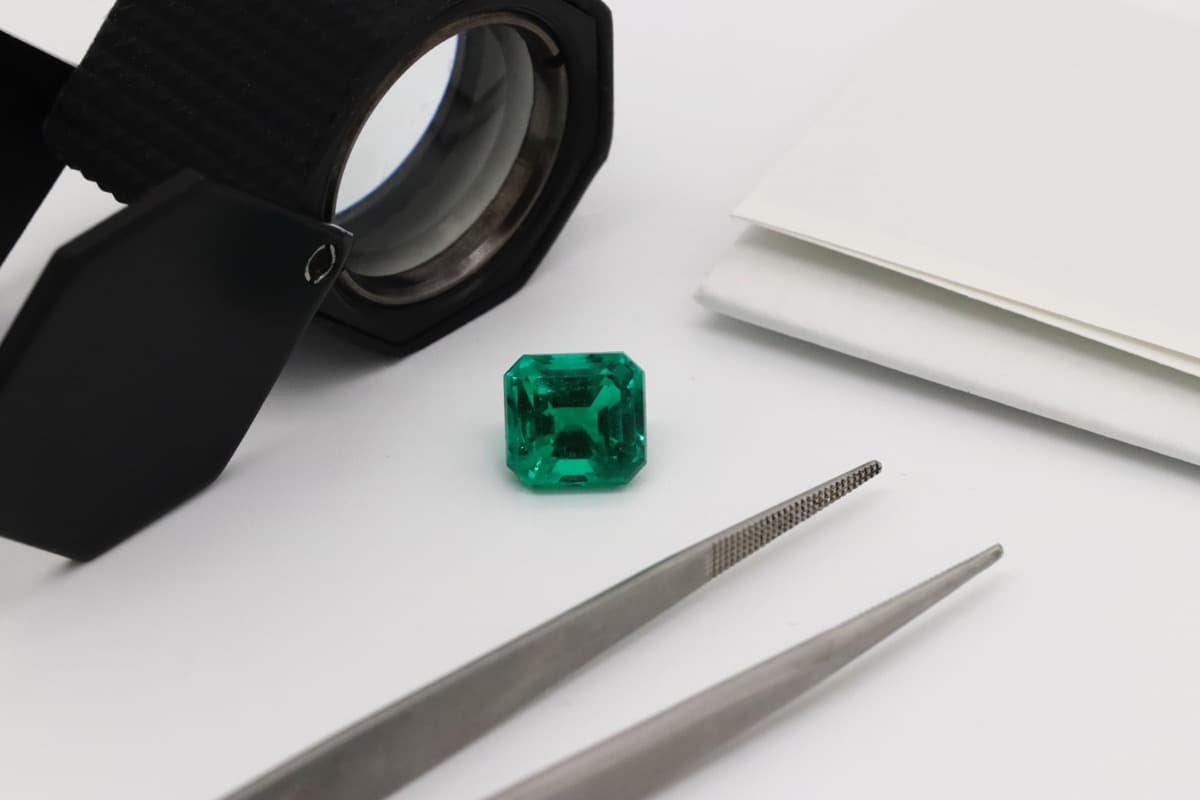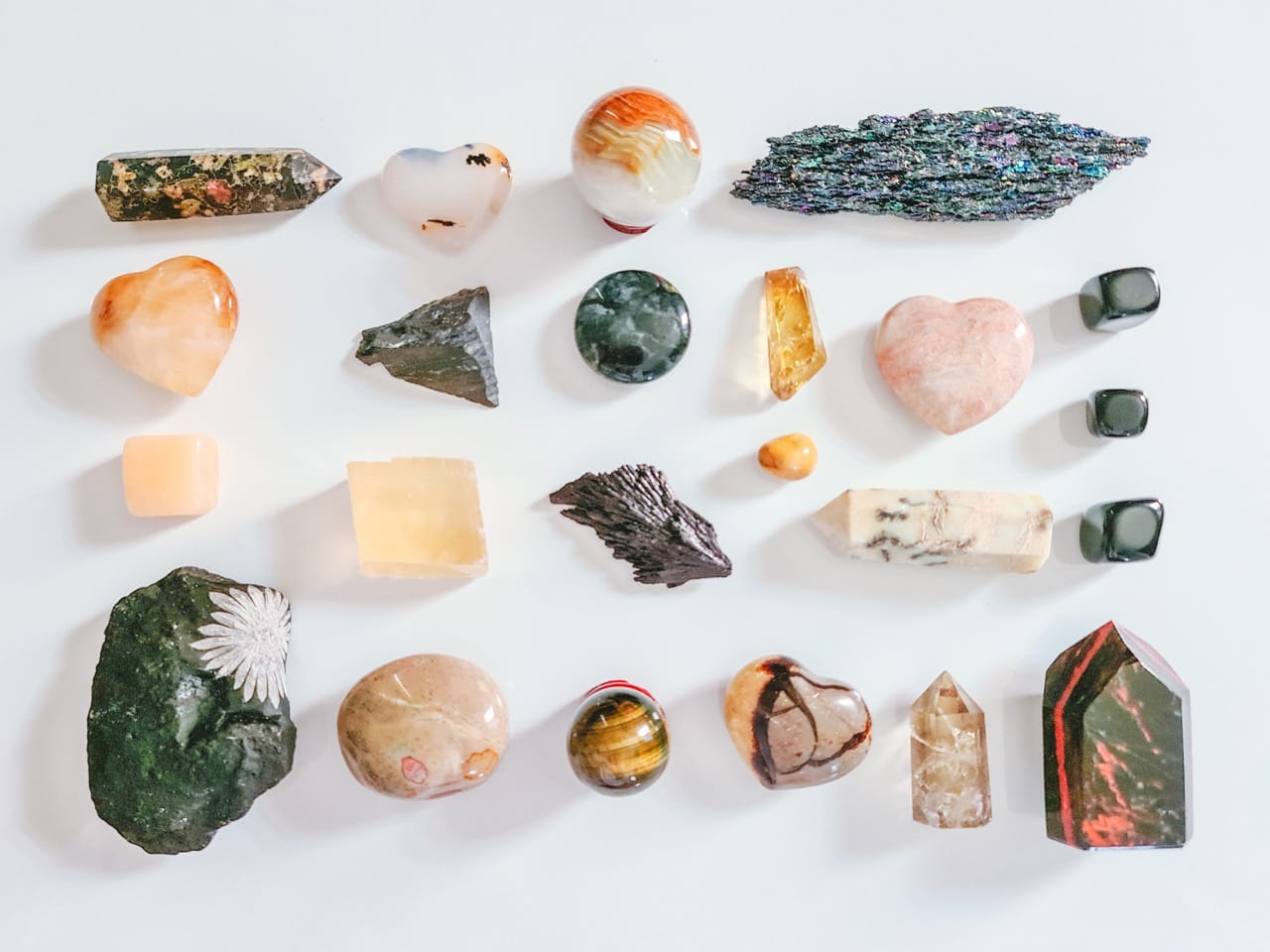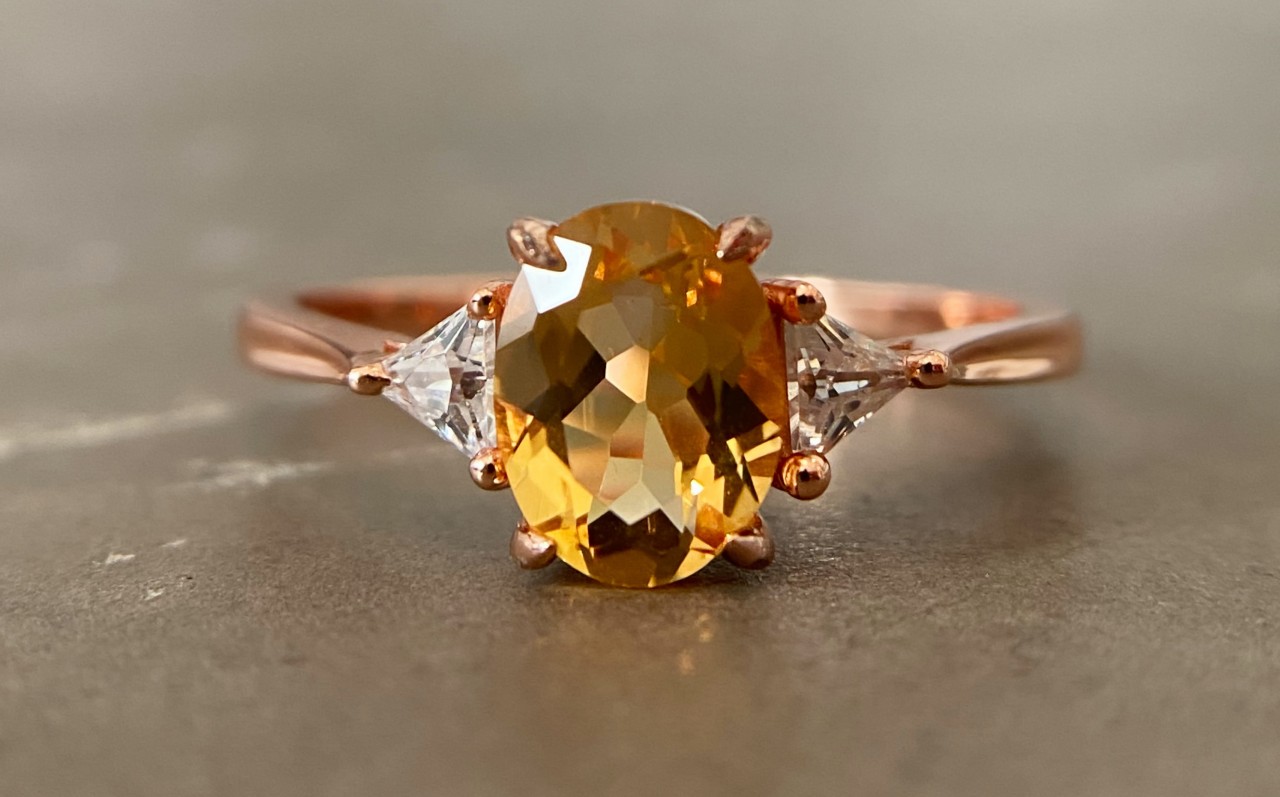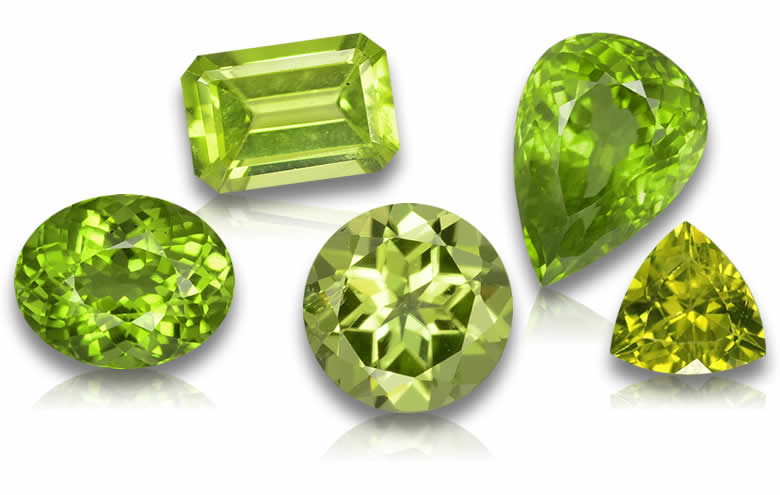Quick info about Emerald Birthstone
- Official birthstone: May
- Colors: Bright green to dark green
- Meaning: Love, fidelity, good luck, healing, wisdom, and prosperity
- Zodiac signs: Taurus and Libra
- Mohs hardness: 7.5 to 8
Birthstones have long been associated with various qualities and attributes that are believed to bring luck, protection, and prosperity to individuals born in a particular month. These gemstones have captivated human fascination for centuries, reflecting the rich tapestry of cultural beliefs and traditions across different civilizations. Each birthstone possesses unique characteristics that make them a symbol of identity and personal significance.
Brief overview of birthstones and their significance
The concept of birthstones can be traced back to ancient times, where they were often linked to astrological signs or the twelve months of the year. Throughout history, various cultures have assigned different gems as birthstones, associating them with specific virtues or powers.
These gems hold a special place in folklore, mythology, religion, and even modern-day symbolism. Birthstones are believed to bring good fortune and positive energies to those who wear them during their birth month.
They serve as constant reminders of one’s connection with nature and the universe. Moreover, birthstones are often cherished as meaningful gifts that carry sentimental value.
Introduction to the May birthstone – Emerald
As spring blossoms into full splendor during May, so does the vibrant green hue of the emerald – a gemstone that embodies renewal, growth, and vitality. Known for its lush color palette ranging from deep forest green to lighter shades reminiscent of new leaves sprouting from trees after winter’s slumber; emerald is considered one of the most captivating gemstones in existence.
Emerald has held immense allure for countless civilizations throughout history due to its mesmerizing beauty and alleged mystical properties. This precious stone has adorned royalty, clergy members, celebrities, and individuals seeking a symbolic connection with nature’s bounties.
The captivating allure surrounding emeralds stems not only from their visual appeal but also from the rich history intertwined with these prized gemstones. Revered for its deep green color, often referred to as “emerald green,” this gemstone has become synonymous with elegance, luxury, and opulence.
The allure of emerald lies not only in its captivating aesthetics but also in the beliefs attributed to it throughout history. From its alleged ability to enhance vision and intellect to being a symbol of rebirth and love, the emerald continues to be a gemstone that holds great significance for those born in May.
In the subsequent sections, we will delve deeper into the historical significance of emeralds, explore their geological formation and unique properties, examine prominent mining locations around the world, and even uncover famous emeralds that have captured the world’s attention. Join us on this journey as we unravel the captivating tale of May’s birthstone – the majestic emerald.
Ancient Civilizations’ Fascination with Emeralds
The Egyptians and their Love for Emeralds
In the realm of ancient civilizations, the Egyptians held a deep admiration for emeralds. These magnificent gemstones were considered a symbol of eternal life and were believed to possess protective powers.
The allure of emeralds can be traced back to as early as 1500 BCE when they were first discovered in mines near the Red Sea. The pharaohs adorned themselves with emerald jewelry, often using them in elaborate headdresses, necklaces, and rings.
They believed that emeralds granted them divine favor and bestowed upon them wisdom, fertility, and rebirth. The Egyptians attributed great value to the vivid green color of emeralds which they associated with nature’s renewal and prosperity.
Cleopatra, the last pharaoh of Egypt, was particularly fond of emeralds and used them extensively in her royal adornments. She believed that their radiant green hues reflected her own power and captivated those who beheld her beauty.
The Aztecs and their Belief in the Healing Powers of Emeralds
Across the Atlantic Ocean in Mesoamerica, the Aztecs also held a profound reverence for emeralds. They considered these gemstones sacred and believed that they possessed immense healing powers. According to Aztec beliefs, wearing or carrying an emerald could help cure ailments related to vision or any maladies associated with the heart.
The Aztecs saw emeralds as a direct connection to Quetzalcoatl, their revered god of wisdom and knowledge. They would often use finely carved emerald amulets known as “quetzalitzli” during religious ceremonies to invoke protection from Quetzalcoatl’s influence.
Emeralds played an integral role in Aztec society beyond their medicinal properties; they were also utilized as a form of currency. The Aztecs traded emeralds with neighboring tribes and communities, recognizing their inherent value and rarity.
The fascination with emeralds among ancient civilizations like the Egyptians and the Aztecs was not merely rooted in their physical beauty but also in the symbolism and spiritual significance attached to these gemstones. Through their love for emeralds, both cultures sought to harness the positive energy that emanated from these precious gems, considering them a divine gift from nature herself.
Geological Formation of Emeralds
Explanation of how emeralds are formed
Emeralds, the mesmerizing green gemstones, are formed through a remarkable geological process combining heat, pressure, and specific mineral compositions. These enchanting stones belong to the beryl family of minerals and owe their captivating green color to trace amounts of chromium and sometimes vanadium. While the formation process is intricate and spans millions of years, it begins with the right geological conditions.
The role of heat, pressure, and specific mineral compositions
The formation of emeralds requires a delicate interplay between heat, pressure, and specific mineral compositions. Initially, a combination of intense heat and high-pressure conditions deep within the Earth’s crust provide the necessary energy for crystal growth.
During this stage, beryllium-rich fluids permeate through existing cracks in host rocks. As these fluids move through different rock layers over time, they encounter suitable elements such as aluminum and silicon.
The chemical reactions between these elements result in the formation of beryl crystals. When chromium or vanadium is present within these fluids, they incorporate themselves into the crystal lattice structure during growth to produce emerald’s distinctive green hue.
Formation in metamorphic rocks
Metamorphic rocks play a crucial role in providing the ideal environment for emerald formation. Specifically, emeralds often originate from schist or amphibolite formations that have undergone extensive alteration due to intense heat and pressure over millions of years.
These rocks serve as hosts for beryl-rich veins where emeralds can develop. During periods of tectonic activity or mountain-building processes like plate collisions or volcanic activity, these metamorphic rocks experience significant deformation.
This deformation creates fractures or fissures that act as channels for mineral-rich fluids to flow through. Over time, these fluids deposit beryllium and other essential elements required for emerald formation, leading to the growth of spectacular crystals.
Formation in hydrothermal veins
Hydrothermal veins are another significant geological setting where emeralds can form. In this scenario, mineral-rich fluids are heated by intrusions of magma deep beneath the Earth’s surface. These hot fluids circulate through pre-existing fractures or open spaces within rocks, carrying minerals along with them.
When these hydrothermal fluids encounter favorable conditions such as specific temperatures, pressures, and chemical compositions, they begin depositing beryl crystals. Within these vein systems, emerald gems can develop as a result of the incorporation of chromium or vanadium into the growing crystals.
Overall, the formation of emeralds is a captivating process that requires precise conditions involving heat, pressure, and specific mineral compositions. Whether within metamorphic rocks or hydrothermal veins, these gemstones take shape over millennia to become one of nature’s most prized treasures.
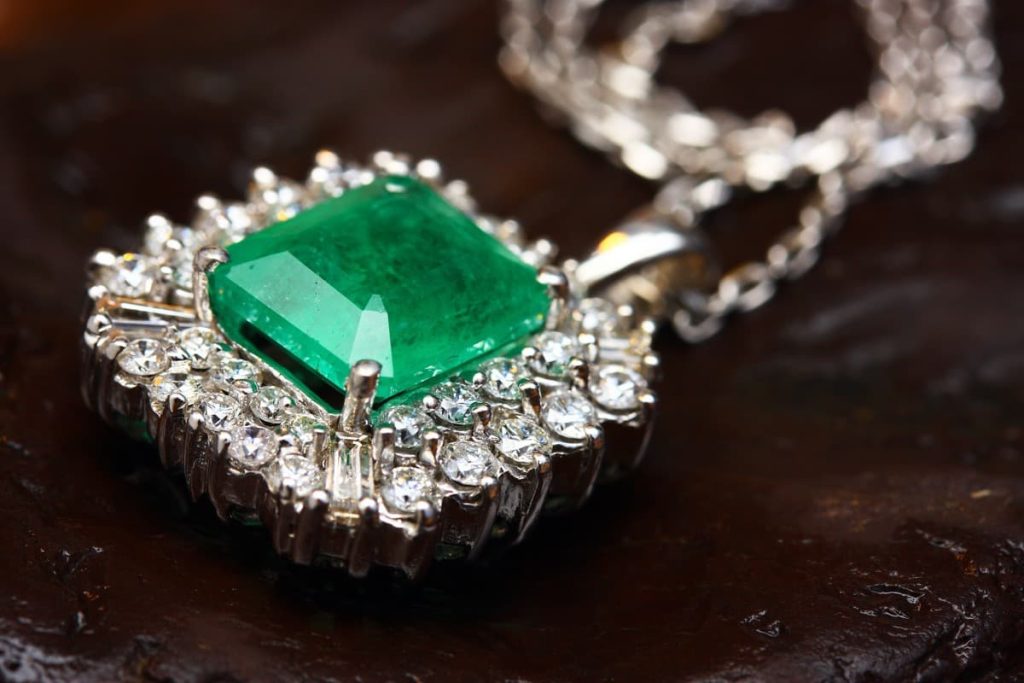
Characteristics and Properties of Emeralds
Color Variations in Emeralds: Shades Ranging from Light Green to Deep Green
Emeralds, the enchanting birthstone of May, exhibit a mesmerizing range of captivating green hues. From delicate pastels to deep, saturated tones, emeralds encompass a spectrum that mirrors nature’s lush landscapes. The color variations in these exquisite gemstones are influenced by elements such as chromium and vanadium present during their formation process.
Lighter shades showcase a translucent elegance resembling freshly sprouted leaves and tender buds, while deeper greens evoke a sense of mystery akin to dense foliage in ancient forests. This vast array of colors provides ample opportunities for individuals to find an emerald that resonates with their personal style and preferences.
Importance of a Vibrant, Saturated Hue
The vibrancy and saturation of an emerald’s hue play pivotal roles in determining its allure and value. A highly prized emerald exhibits a pure green coloration that is both vivid and intense. The presence of secondary hues like blue or yellow can diminish the overall desirability unless they enhance the stone’s beauty harmoniously.
A well-regarded principle among connoisseurs is the “Garden Effect,” which refers to the mesmerizing inclusion-filled appearance that certain emeralds possess when viewed under natural daylight. This enchanting effect enhances the stone’s allure by giving it an organic character reminiscent of gazing into an ethereal garden.
Clarity and Transparency Levels: Inclusions as a Unique Feature in Natural Emeralds
Unlike many other gemstones that prioritize clarity, natural emeralds often contain characteristic inclusions known as “jardin” (French for garden). These internal features—such as tiny fractures or mineral traces—contribute to their distinctiveness; they are often embraced rather than shunned. Just as nature’s imperfections lend charm to a blooming rose, so too do the inclusions add character to an emerald, capturing fragments of its formation journey within.
However, clarity remains a significant factor in determining an emerald’s value. Stones with higher transparency and fewer visible inclusions are typically more sought-after, as they allow light to pass through and enhance the gem’s brilliance.
Impact on Value Based on Clarity Levels: From Flawless to Included
Evaluating an emerald’s clarity involves examining the presence, size, location, and visibility of inclusions. The Gemological Institute of America (GIA) categorizes clarity grades into several classifications: Flawless (no inclusions or blemishes visible under 10x magnification), Internally Flawless (no internal inclusions), VVS (Very Very Slightly Included), VS (Very Slightly Included), SI (Slightly Included), and I (Included).
As expected, stones with higher clarity grades command higher prices due to their rarity and visual appeal. However, it is worth noting that emeralds with distinct inclusions can possess a unique charm that appeals to collectors who appreciate their natural formation processes.
Durability and Hardness Factors: Emerald’s Rating on the Mohs Scale Compared to Other Gemstones
Emeralds are relatively durable gemstones but require proper care due to their moderate hardness on the Mohs scale. With a rating of 7.5-8, they are softer than sapphires or diamonds but still capable of withstanding daily wear if treated gently. It is important to protect emeralds from sharp blows or extreme temperatures that could cause fractures or damage their internal structure.
Additionally, prolonged exposure to harsh chemicals can dull their luster over time. To safeguard these precious gemstones from potential harm while preserving their brilliance, it is advisable to remove emerald jewelry before engaging in activities such as sports, gardening, or cleaning solutions that could impact their longevity.
Care Tips for Preserving the Beauty of an Emerald
To maintain the radiant allure of emeralds, a few care tips are essential. Cleaning should be done with mild soapy water and a soft brush to gently remove dirt or residue without causing any harm. It is important to avoid using ultrasonic cleaners or steamers as they may damage the stone or worsen existing fractures.
Storing emerald jewelry separately from other gemstones or metals can help prevent scratches and abrasions. It is also advisable to limit exposure to direct sunlight for prolonged periods, as excessive heat can affect the gem’s color intensity over time.
By following these simple guidelines, one can ensure that their cherished emerald jewelry remains as captivating and vibrant as the day it was acquired. Note: The HTML tags used above are solely for illustrative purposes and shouldn’t be included in an actual article.
Emerald Mining Locations around the World
Major sources of emerald deposits
Emeralds, with their captivating green allure, are found in various regions across the globe. Among these locations, some have gained particular recognition for their exceptional quality and abundance of emerald deposits. The major sources of emeralds can be found primarily in Colombia, Zambia, and Brazil.
Colombia – renowned for producing high-quality emeralds
Colombia has long been hailed as the world’s leading producer of high-quality emeralds. The country’s mines are located in the Muzo and Chivor regions, which have a rich history dating back to the pre-Columbian era. Colombian emeralds are esteemed for their captivating green hue, known as “garden” or “grass” green.
These emeralds often exhibit exceptional clarity and transparency due to the unique geological conditions in this region. The mining process in Colombia is arduous yet meticulous, with miners carefully extracting emerald-bearing rock from deep underground tunnels.
The painstaking selection process ensures that only the finest specimens make it to market. Due to their impeccable quality and distinct coloration, Colombian emeralds command a premium price and are highly sought after by collectors and gem enthusiasts worldwide.
Zambia – known for its vivid green color
Zambia is another significant player in the global emerald market. Known for its strikingly vivid green coloration, Zambian emeralds possess a distinct allure that sets them apart from those found elsewhere.
Emeralds from Zambia typically exhibit a slightly bluish undertone within their rich green hue. The Kafubu River area near Kitwe is one of Zambia’s primary mining regions where notable quantities of fine-quality rough stones have been discovered.
In recent years, Zambian mines have made significant advancements in their production, resulting in an increased supply of emeralds to the global market. These emeralds are renowned for their clarity and durability, making them highly desirable for jewelry.
Brazil – significant source with a wide range of qualities
Brazil has been a significant source of emeralds since the early 16th century when Portuguese explorers discovered deposits in the historic region of Minas Gerais. Brazilian emeralds are known for their wide range of qualities, which makes them accessible to different segments of the market.
These emeralds can vary in color from light to deep green and may display varying levels of clarity. The Belmont and Itabira mines in Brazil are notable locations where emerald extraction takes place.
The country’s production includes both large commercial quantities as well as exceptional gem-quality stones. Brazilian emeralds often exhibit natural inclusions within the gems, which adds character and uniqueness to each stone.
Other notable mining locations
In addition to Colombia, Zambia, and Brazil, various other regions around the world contribute to global emerald supply. Afghanistan is known for its rich deposits found primarily in the Panjshir Valley, yielding vivid green stones with excellent transparency.
Zimbabwe’s Sandawana mine produces small but exceptionally high-quality emeralds with a unique bluish-green hue. Russia’s Ural Mountains are an ancient source of emeralds that have gained recognition for their distinct natural formations and unique green coloration.
Pakistan’s Swat Valley region boasts mines that produce fine-quality crystals with beautiful green hues. The global distribution of these mining locations ensures a diverse selection of quality and characteristics available to meet different market demands while perpetuating this timeless gemstone’s allure across cultures and continents.
Famous Emeralds throughout History
1. The Mogul Emerald
One of the most legendary emeralds in history is the Mogul Emerald, which dates back to the 17th century and weighs an astonishing 217.80 carats. It is believed to have originated from Colombia and was acquired by Shah Jahan, the Mughal Emperor of India, who incorporated it into his extravagant royal collection. With its remarkable size and mesmerizing green color, the Mogul Emerald has captivated countless admirers throughout the centuries.
2. The Chalk Emerald
The Chalk Emerald is another renowned gemstone that holds a special place in both gemstone history and American history. Weighing approximately 37 carats, this emerald boasts a vivid green hue and exceptional clarity. It became part of a stunning brooch worn by former First Lady Jacqueline Kennedy during her husband’s inauguration in 1961. Its elegant design features diamonds surrounding the emerald, further highlighting its beauty and significance.
3. The Duke of Devonshire’s Emerald
The Duke of Devonshire’s Emerald is an extraordinary gem that originated from Colombia but found its home in England. This magnificent emerald weighs around 1,383 carats and displays a deep, alluring green color. Believed to have been owned by various Indian rulers before finding its way to Britain, it now resides at Chatsworth House as part of an impressive collection of precious gems.
Conclusion
Emeralds have long held a special place in human history due to their captivating beauty and profound symbolism. From ancient civilizations such as Egypt and Aztec cultures to contemporary fame within royal collections and prominent events like presidential inaugurations, famous emeralds have left an indelible mark on our collective fascination with gemstones. As we reflect on the historical significance, geological formation, and remarkable characteristics of emeralds, it becomes clear that these gemstones possess a timeless appeal.
The allure of emeralds lies not only in their vibrant color and unique inclusions but also in the stories they carry throughout centuries of human existence. With each famous emerald that emerges from the annals of history, we are reminded of the enduring power and beauty that gemstones encompass.
These precious stones continue to inspire awe and fascination, offering a tangible connection to our past while symbolizing hope, renewal, and prosperity for our future endeavors. So let us celebrate the captivating emerald, a treasure born from the depths of the earth that has captured our hearts for centuries to come.

